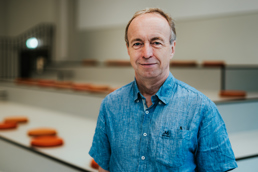PhotoFake – Visual Disinformation, the Digital Economy and the Epistemology of the Camera Image
- Project period: 2021 - 2025
- Categories: Applied Research, Basic Research
Description
Audio-visual material, like photos and videos, can appear to be made by cameras, although they are generated or altered by digital technologies. AI-generated and altered images add a new dimension to the disinformation crisis.
Media organizations struggle to verify visual material in order to contain the potential threat they pose. They do this by developing manuals and best practice for fact-checking visual material. These are aimed at handling a wide range of examples, from the most rudimentary alterations to the AI-enhanced videos of tomorrow.
PhotoFake will offer research-based guidelines for the optimization of such fact-checking manuals and practices. The guidelines will be historically informed and take into account future scenarios for how image alteration and generation-technologies and practices may develop.
Such scenarios draw on examinations of how photographic technologies and practices are changing – in everyday life, as well as in other domains.
Reviewing the photographic vocabulary
In order to counter misconceptions PhotoFake critically interrogates the vocabulary used for discussing visual deception.
As part of its conceptual work, PhotoFake also examines the notion of the post-photographic, a term which has gained new traction at a time when AI promises a world in which images that appear to be photographic may not have been produced by cameras.
The research is organized in four efforts which explore:
- How optimization of contemporary manuals for detecting audiovisual disinformation may be identified, by drawing on the history and theory of film and photography. This involves a critical reassessment of the vocabulary and the implicit media theoretical assumptions underpinning the manuals.
- How actual practices of fact-checking audio-visual material in news media may be optimized, given internal constraints as well as external pressures from a global digital media ecology largely outside their control. This involves exploring the institutional practices in which the manuals are embedded, including the procedural and technological tools involved.
- What new alteration technologies and camera practices with deceptive potential are now evolving, in visual cultures online, and in other relevant domains. This, in order to improve the understanding of the technologies and practices journalists and editors must be aware of.
- Conceptual challenges associated with the vocabulary used to discuss photographic practices at a time in which images that perceptually appear to be photographic are not necessarily produced by traditional cameras and associated techniques. Such challenges will be pursued in dialogue with artists and scholars who now probe AI-informed photographic practices and examine the viability of the term post-photographic.
Participants
Ståle Bjørlykke Grut
University of Oslo
Susanne Ø. Sæther
Henie Onstad Art Centre

Morten Moen
- Associate Professor
Kristiania University College
Westerdals institutt for film og medier
Morten MoenLiv Hausken
University of Oslo
Publications
- Fetveit, Arild (2022). Uncanny (Inter)Mediality and Photo Futures.